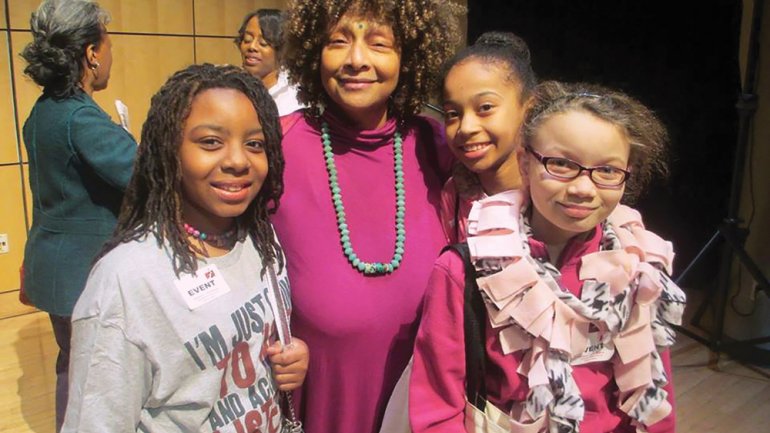The Artist On the Block
The Artist On the Block
In changing times, Joyce J. Scott’s beloved Baltimore remains her haven.
Joyce J. Scott is known as a fearless artist, ready to leap into any medium or method that catches her interest and suits her intent. Called “the queen of beadwork” for her sculpture and jewelry, she is also known for her work in glass, mixed media, printmaking, and performance.
Ask the ACC Fellow about her hometown, though, and she’ll tell you she was always known just as “little Joyce from the neighborhood.” Born and raised in Baltimore, Scott, 67, lives only blocks from where she grew up; though she’s internationally known and widely traveled, she’s deeply attached to her city.
When you were a girl, your mother used to take you to the Baltimore Museum of Art. Did you ever think your work would be in its collection?
I don’t know if I thought I’d be in the BMA, but I knew I was going to be an artist – I was an artist in utero. My mom was an artist; she has two quilts on exhibit at the BMA now. And I used to go to the Walters Art Gallery [now the Walters Art Museum]; I’d just go and consume the art.
How else did Baltimore nurture you as an artist as you were growing up?
My dreams started at home, as a safe place to be, feeling safe in the community. I lived on the second floor in a big row house with marble steps I helped to wash. I was a latchkey kid, but folks watched out for you, like Miss Agnes and her husband on the first floor. I could walk anywhere. As a young girl, walking to school, I’d go through the alleys and pick up things I used in my artwork.
It was also a place where Jewish and black shop owners were working together, where you could feel a sense of prosperity and achievability. I could walk from the black area to nearby neighborhoods, along North Avenue, with shops you could stop into; so I got to be around people from many different places and backgrounds.
You have a long history of leading art programs for people in the community, but you also make work that people in the community can afford.
You know, I make art jewelry that sells for a lot. But – talking about little Joyce from the neighborhood – I still see women I knew from school; how do I pay back this city? So I have a holiday sale with other local artists, with work that sells from $10 to $300. The materials and time might be different, but I’m using the same skills I would use to make something more costly. Why shouldn’t people get that? These are the very people who made [my career] possible.
You’re known for work about social issues; do you ever find yourself responding to local events?
I live just around the corner from where the CVS was torched [during the unrest after Freddie Gray died in police custody in 2015]. A week after the uprising, I knocked on doors on my block where I knew young girls lived and said, “I would like to teach you to make jewelry.” I got three girls, plus three adults who came; all the materials were supplied. But the girls weren’t just talking about beads while they were there. They talked about all kinds of things; they talked about what they might do in life.
What keeps you in Baltimore?
Although I’m a little more suspicious now, my city is a place that has always given me safety, and it has an eccentricity that’s comely. The lines are blurred here – you can be somewhere, say, in a café, and you might meet a philosopher, sitting next to someone who worked on the Hubble, sitting next to art students and garbage haulers.
Why move? This is where the fight is for me. I’m known as the artist on the block; I’m going to stay where I, one person, can possibly make a difference. Because I really do believe one person can make a difference.
Judy Arginteanu is a writer and editor in Minneapolis, and the copy editor for American Craft.




